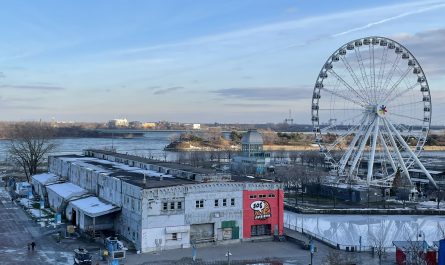Doug and I went to the University of Virginia (UVA) in Charlottesville primarily to see the beautiful Rotunda designed by Thomas Jefferson, but also to see the (alleged) Edgar Allan Poe Room, the “Declaring Independence Exhibit”, and take a history tour. It made for a busy morning!
UVA was founded by Thomas Jefferson in 1819. The original governing board included three U.S. presidents: Jefferson, James Madison, and James Monroe.
Jefferson designed both the university’s architecture as well as the original course of study, of course. (Oh, Jefferson, how you torture me with your amazing intellect that rationalized slavery!)


At the time of its founding, Virginia already had a source of higher education: the College of William & Mary in Williamsburg. But that was a religious school and it stifled the sciences. Jefferson believed in a more well-rounded student (the “Humboldt model”) and most-importantly, that students could study free of religious doctrine.
The grounds were centered around the Rotunda (library), rather the more traditional focus of a church. There was also no divinity school, and no religious affiliation.
Jefferson was intimately involved in all aspects of the university and considered it one of his greatest accomplishments; in fact, he had his grave stone reference just three things: his being the author of the Declaration of American Independence, the author of the Statute of Virginia for religious freedom, and the Father of the University of Virginia.
Today UVA is a prestigious school with a highly selective admissions. It’s been referred to as “Public Ivy” for its rigorous academic experience.
Our first stop on campus was to West Range Room No. 13 which is purported to have been the room used by Edgar Allan Poe when he was a student at UVA. This room is now maintained as a shrine to him by a campus Poe society.
I, of course, am highly suspicious that Poe actually lived in a room numbered 13 (the student records that would provide the answer were destroyed in a fire). But I am quite confident he did not decorate his room with a raven theme. (To which Doug responds “Nevertheless….”)


The door to the room is glass, so you can peer in but not enter. An audio recording about Poe’s time at UVA is supposed to play when a button is pushed, though it has not worked for years, as far as I can tell. The room is furnished in time-period appropriate furniture, but the pieces do not have any direct connection to Poe.
You can read all about Poe’s life and adventures from our stops in Richmond, Va., and Baltimore, Md., but the relevant detail is that Poe was a student at UVA for most of 1826, enrolled in the School of Ancient Languages and in the School of Modern Languages. It all came to an end quickly, however, due to financial difficulties.
After a few minutes enjoying Poe, we popped across the street to the “Declaring Independence” exhibit, which you can read about here.
At last, we walked to the famous Rotunda, designed by Jefferson as the “architectural and academic heart” of the university.
Laid out beyond it on the great lawn is the “Academical Village”, consisting of ten pavilions that house faculty, student rooms, gardens, and dining halls.
The Rotunda (see cover photo for this post) was modeled after the Pantheon in Rome, and was built for $60,000. (Fun fact: the 2016 renovation cost more than $50 million!)
The Rotunda served as the university library until the larger Alderman Library was built in 1938. The original library included books selected by Jefferson himself.


The pièce de resistance of the Rotunda is the Dome Room. The library was placed here, though hidden from view behind the columns. The current skylight is modern, though in the style of the original.
In 1895, a fire broke out in the annex, which had been added to the North side of the Rotunda in 1853. This fire completely gutted the Rotunda, annex and dome, leaving only the circular brick walls intact.
Rebuilding also brought some significant design changes, which remained in place until restoration in 1973.
We arrived in time for a Historical Tour, which we had originally thought was a tour of the Rotunda, but boy were we in for a surprise.
The tour started with a disclaimer that the student guides are empowered to write their own tours, thus removing the university from any official affiliation with the content.
Our tour guide threw it down. The university land was stolen from the Monacan Indians. The school was built with enslaved labor. The first memorial to mention enslaved labor was put in the floor of a walkway to be trampled over. Racism. Sexism. Segregation. Eugenics. Lost Cause Mythology.


We loved it. She was clearly very knowledgeable, was highly enthusiastic, and was demonstrably proud to be a student there.
Some call it “woke”, while we call it “statin’ facts.”
UVA did not fully integrate until the 1960s, and it only became coed in 1970 – 1970!! – and that was because it was under court order to do so.


Our guide pointed out the new and improved recognition of the 4,000 enslaved laborers who had built and worked at the school, so we went over to check it out after the tour.
The shape of the Memorial to Enslaved Laborers is “inspired by the ring shout, an ecstatic dance performed by African Americans that anticipates spiritual liberation.”
There are 4,000 slash marks in the granite, one for each known enslaved person; if a name or other identifier is known, it is indicated. It’s sobering to see so many blank spaces.
On our drive in and out of Charlottesville we had been listening to Master of the Mountain, Thomas Jefferson & His Slaves by Henry Wiencek, so seeing Jefferson’s Rotunda with the Memorial to Enslaved Laborers in view was an interesting experience.









